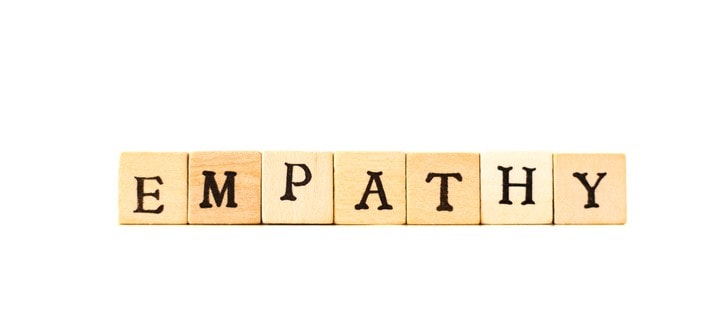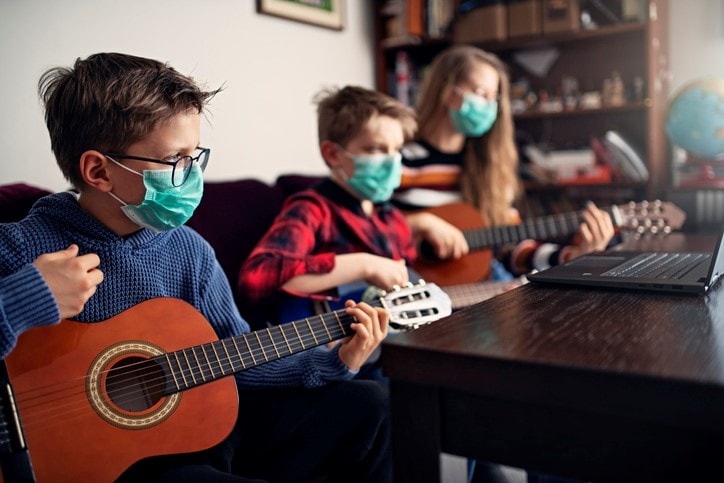/ News Posts / Social and Emotional Learning and Visual and Performing Arts
Finding Sanctuary
Social and Emotional Learning and Visual and Performing Arts
By NAfME Member Edward Varner, Ed.D.
This article was first published on Edward Varner’s Creating Hope blog.
Social and emotional learning (SEL) is the process through which children and adults acquire and effectively apply the knowledge, attitudes, and skills necessary to understand and manage emotions, set and achieve positive goals, feel and show empathy for others, establish and maintain positive relationships, and make responsible decisions.
VPA’s Natural Alignment with Social and Emotional Learning
Visual and performing arts (VPA) naturally align with established Social and Emotional Learning (SEL) goals, and arts teachers are uniquely positioned to help their students become more socially and emotionally competent while simultaneously developing the skills outlined in the VPA curriculum. Standard VPA program activities help students to better understand concepts of dedication and self-confidence. VPA programing offers the opportunities for students to “practice and rehearse being self-aware, socially aware, and making good decisions” (Edgar, 2017).
The key components of SEL are self-awareness, social awareness, responsible decision-making, self-management, and relationship skills. These components are generally based on the goals of knowing oneself and others, making responsible decisions, caring for others, and knowing how to behave. It does not take much to recognize the importance of these SEL competencies to student success in school. As such, many schools have developed strategies to improve the social and emotional competencies of their students. VPA environments lend themselves well to aiding in these efforts. I propose that there is a natural link in VPA learning environments with each of the following elements of SEL:
- Self-awareness: This element focuses on how well one knows himself/herself. It includes recognizing personal emotions, self-perceptions, strengths, needs, values, and self-efficacy within a situation. Performing arts classes provide learning environments that promotes student awareness of place within the performing ensemble (i.e., What is my place? What is my role? What is my part of the whole?). Visual arts classes provide opportunities to explore habits of self-reflection (studio habits of mind and personal self-reflection).
- Social awareness: This element focuses on how well one knows the people around them. It includes empathy, an appreciation of diversity, respect, and overall perspective. Performing arts classes are learning environments that promotes the creation of community within performing ensembles (i.e., How well do I get along with others? How well do I collaborate with others?). Visual arts classes provide opportunities to explore social justice topics and how students can impact their community.
- Responsible decision-making: This element focuses on identifying problems, solving problems, and accepting personal responsibility. Performing arts classes are learning environments that promote student identification and development of appropriate responses quickly in difficult situations (rehearsals) which are critical for responsible decision-making (i.e., Do I make good choices?). Visual arts and performing arts classes reinforce responsible decision-making skills when using and maintaining materials, equipment, and tools safely (work and performance spaces).
- Self-management: This element focuses on impulse control, stress management, self-motivation, discipline, goal-setting, and organizational skills. Visual and performing arts classes are learning environments that promote the development of self-control, encourage individual and ensemble goal-setting and responsible time-management (i.e., Am I in control of myself?).
- Relationship skills: This element focuses on communication social engagement, building and maintaining relationships, working cooperatively, and conflict management. Performing arts are learning environments that promote all of these elements in multiple ways as students who participate in performing arts enter into personal relationships with other each time they endeavor to perform in an ensemble.
The VPA teacher is one of the most influential contributors to the social-emotional climate of the VPA program and has primary control over the learning environment. However, within a quality VPA program, the very act of creating together as a group also has the potential to encourage social bonding and the development of social relationships. Some of the key skills students can learn in the VPA classroom include: cooperation, communication, positive peer interactions, recognition and support of the rights of others, dependability, responsibility, focus of personal attention, impulse control, delayed gratification, and acceptance of consequences.
Do we use our students to make art (dance/music/theatre/visual art), or do we use art to better prepare our students for a positive role in the world?
VPA classrooms can be places for social and emotional growth. Emotionally, students advance because of the responsibility, commitment, perseverance, and self-discipline fostered in the VPA classroom, which can result in increased self-esteem, self-confidence, life skills, and self-knowledge. VPA programming is in a unique position to produce social, emotional, and academic results by aligning curricular offerings and consistently applying the characteristics of SEL. VPA teachers should consider and apply the following:
- Teach VPA students to apply SEL skills.
- Build connections to school and community by establishing a caring, engaging environment.
- Provide developmentally and culturally appropriate instruction.
- Align with and support school-wide SEL efforts.
- Enhance academic performance by addressing affective social dimensions of VPA programming.
- Engage community partners.
- Incorporate continuing evaluation and improvement.
- Identify and align VPA lesson plans to highlight natural VPA & SEL connections.
Resources
Collaborative for Academic, Social, and Emotional Learning (CASEL).
Edgar, S. (2017). Music Education and Social Emotional Learning: The Heart of Teaching Music. Chicago: Gia.
O’Malley, H. (2018). Connecting learning with emotions. Edutopia. Retrieved July 2018.
McEntire, S. (2018) Social and emotional learning through art education. Retrieved June 2018.
Parish, A. (2016). Social, emotional, and service-learning in a visual arts classroom. National Youth Leadership Council. Retrieved June 2018.
As an educator, I have always been a firm believer in the philosophies of integration and differentiation of curriculum to better meet the needs of students. I must know my students in order to adequately and effectively meet them where they are and help them progress to the next level. This philosophy of knowing your students necessitates the added element of care. Educators must care for their students, themselves, and have the fortitude to continue caring when it appears that others have surrendered. – Edward Varner, Ed.D.
About the author:
Dr. Edward Varner has been an educator, a musician, actor, arts education specialist, and advocate for more than 28 years. He earned the Doctor of Education Degree (Ed.D.) in School Leadership from Concordia University Chicago in 2017, holds a Master’s Degree in Educational Administration and Leadership from the University of British Columbia (2005), and holds the Bachelor of Arts degree in Music from California State University, Los Angeles (1989). He has presented language experience, music, arts, and literacy workshops for the National Association for Music Education, National Association of Elementary School Principals, the International Reading Association, the Virginia Reading Association, the Washington State Office of the Superintendent of Public Instruction (OSPI), the International Conference on Education (HI), the Pennsylvania Association of Independent Schools, the Arts Time Conference (WA), Montana State University, the California Arts Project, Great Basin College, Penn State Berks, and a variety of school districts.
Did this blog spur new ideas for your music program? Share them on Amplify! Interested in reprinting this article? Please review the reprint guidelines.
The National Association for Music Education (NAfME) provides a number of forums for the sharing of information and opinion, including blogs and postings on our website, articles and columns in our magazines and journals, and postings to our Amplify member portal. Unless specifically noted, the views expressed in these media do not necessarily represent the policy or views of the Association, its officers, or its employees.
August 6, 2020. © National Association for Music Education (NAfME.org)
Published Date
August 6, 2020
Category
- Social Emotional Learning
Copyright
August 6, 2020. © National Association for Music Education (NAfME.org)






